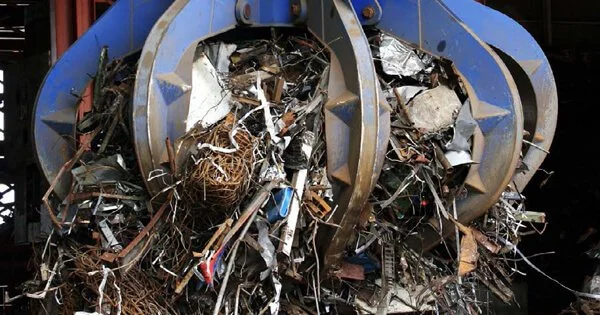Building Sustainability: Reclaimed Ulin Wood, Bamboo, and Steel in the Circular Economy
Exploring Eco-Friendly Materials for Sustainable Construction
As global industries increasingly prioritize sustainability, the construction sector faces a pivotal moment to adopt practices that align with the principles of the circular economy. This approach emphasizes the reuse, recycling, and regeneration of materials, reducing waste and environmental impact. By incorporating materials like reclaimed Ulin wood, bamboo, and recycled steel, the industry can significantly contribute to a sustainable future while maintaining the structural integrity and aesthetic appeal of modern architecture.
Project by Kaltimber
The Role of Diverse Eco-Friendly Materials
Reclaimed Ulin Wood: Strength and Sustainability
Reclaimed Ulin wood, also known as Borneo ironwood, exemplifies the principles of the circular economy by repurposing materials from decommissioned structures such as old bridges and buildings. Its natural resistance to decay, pests, and extreme weather ensures a long lifespan for beams, rafters, and other structural components. By reducing the demand for newly harvested timber, reclaimed Ulin wood helps preserve vital tropical forests and lowers carbon emissions associated with logging and transportation.
Bamboo: The Renewable Powerhouse
Bamboo, a rapidly renewable resource, offers unmatched versatility in construction. Its strength-to-weight ratio rivals that of steel, making it suitable for scaffolding, flooring, and even load-bearing structures. Bamboo’s quick growth cycle and ability to regenerate after harvesting make it a cornerstone of sustainable building practices. Additionally, its high flexibility and resistance to seismic forces position bamboo as an innovative solution for earthquake-prone regions.
Recycled Steel: Durability and Recyclability
Steel is one of the most recycled materials in the world, and its role in the circular economy is vital. Recycled steel reduces the need for energy-intensive mining and production processes. Its durability and strength make it ideal for framing and reinforcement, while its adaptability supports a wide range of architectural designs. Incorporating recycled steel into construction projects minimizes waste and supports the industry’s transition to a low-carbon future.
Original picture source
Benefits of a Circular Economy in Construction
Waste Reduction
By reusing and recycling materials like Ulin wood, bamboo, and steel, the construction sector can divert significant amounts of waste from landfills. This not only conserves resources but also mitigates environmental pollution.
Lower Carbon Footprint
Reclaimed and recycled materials require less energy for processing compared to their newly sourced counterparts. For instance, using reclaimed Ulin wood reduces emissions from logging and transportation, while recycled steel eliminates the energy-intensive steps of mining and refining.
Innovative Sustainable Design
Combining materials such as bamboo and reclaimed Ulin wood enables architects to create innovative designs that prioritize energy efficiency and environmental responsibility. These materials’ unique properties allow for the construction of durable, visually striking structures that align with green building standards.
Real-World Examples
Eco-Resorts Integrating Reclaimed and Renewable Materials
Luxury eco-resorts in Southeast Asia have successfully combined reclaimed Ulin wood and bamboo to construct durable, sustainable accommodations. These projects showcase the synergy between reclaimed timber’s resilience and bamboo’s renewable qualities, resulting in eco-friendly designs that withstand tropical climates.
Project by Asali Bali
Urban Housing Projects with Recycled Steel and Timber
In urban environments, projects utilizing recycled steel for framing and reclaimed wood for interior finishes demonstrate how the circular economy can thrive in densely populated areas. These initiatives reduce material waste while creating energy-efficient housing solutions.
Challenges and Opportunities
Logistical Challenges
Sourcing reclaimed materials like Ulin wood can be complex, requiring thorough inspection and processing to ensure quality and safety. Similarly, establishing supply chains for recycled bamboo and steel demands investment in infrastructure and collaboration among stakeholders.
Policy and Incentives
Government incentives and regulations play a crucial role in advancing the circular economy. Policies promoting the use of reclaimed and recycled materials can encourage builders and developers to prioritize sustainability in their projects.
Building Awareness and Advocacy
The adoption of a circular economy in construction requires widespread awareness and advocacy. Showcasing successful projects that integrate reclaimed Ulin wood, bamboo, and recycled steel can inspire architects, builders, and policymakers to embrace sustainable practices. Additionally, platforms like COP29 offer opportunities to highlight the environmental and economic benefits of circular construction, driving global momentum toward greener building standards.
Conclusion
The integration of materials like reclaimed Ulin wood, bamboo, and recycled steel into construction practices represents a transformative step toward sustainability. By reducing waste, lowering carbon emissions, and preserving natural resources, these materials exemplify the potential of the circular economy to reshape the building industry. As the world faces pressing environmental challenges, adopting these eco-friendly solutions is not just a choice but a necessity for a resilient and sustainable future.



